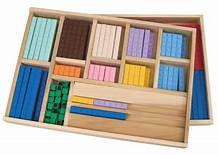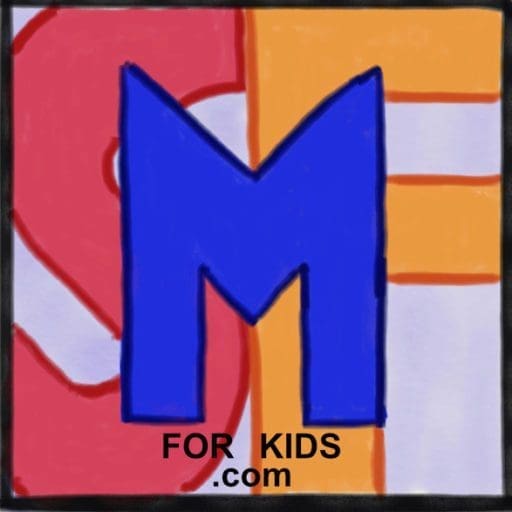There are many homeschool math curriculums out there and it can be overwhelming for new homeschoolers! In general Cathy Duffy’s reviews is the place to go to get good comparison information. If your child is dyslexic Homeschooling With Dyslexia has a curriculum review guide specifically for dyslexic kids. However, in all my years of teaching and tutoring I have used a few programs I highly recommend. Here are my favorites that I have personally used:
For a simple but thorough program– Kate Snow’s Math With Confidence
Kate Snow’s Math With Confidence is a newer program. It is currently available to purchase for grades K-4. Fifth grade will be published summer 2025, and grade 6 in 2026. This is one of the least expensive homeschool programs. All you need is the instructor guide, student workbook, and household materials you probably already have. It is designed for parents who may not have a lot of confidence in their own math or math teaching to be able to effectively homeschool. However, even parents with a math background may appreciate the simple approach and easy prep. The instructor guide is scripted and ready to open and go.
I have used and liked Kate Snow’s other programs like Addition Facts That Stick so I chose to try out the 2nd grade Math With Confidence with one of my tutoring students. It was a great fit for her as she is basically on level but needs more confidence in her math skills. I have since talked to several parents using this program, and heard nothing but good things about it.
For struggling students – Math U See
For struggling students, Math U See is excellent. It is mastery based which means it will repeat the same concept until students are solid in it instead of going on to something else. It does have systematic review of previously learned topics but does not jump around like Right Start and spiral programs). MUS also is a K-12 program, so you can use it all the way through school if you want. Because of its setup (focusing on one main topic per year) it does meet common core standards but in a different timeline. Math U See will eventually meet standards if you continue using it through all of the levels. However, it may not be the best choice if you are homeschooling temporarily.
The lessons are very straightforward and easy to use. The student book provides 7 pages per lesson. These are 3 practice pages for the new concept, 3 pages of review of everything learned so far, and 1 page of enrichment. The pages have a simple layout with black and white print. This is less distracting for some kids but kind of boring for others who prefer color and visuals. The Math U See blocks are a one time necessary purchase. They are the same concept as Cuisenaire Rods but the size, design and color are unique to this curriculum and will be used at all levels. I have to say I LOVE these blocks. I have used them with lots of kids not using Math U See.

Math U See blocksThe program includes video instruction (DVD or digital access) meant to be watched by parent and child together. If you don’t want video instruction you can watch the video yourself and then teach your child. If you’re comfortable in math instruction the instructor guide has clear enough instructions that you don’t necessarily need the videos. (I personally tutor using Math U See and don’t have the videos.)
For right brain learners- Right Start
Right Start is my favorite curriculum I have personally used. It is perfect for kids who need hands on manipulatives and games (which most kids do) but do not need the repetition and simplicity of Math U See. There is a lot more variety in activities and it does a fabulous job of building number sense. However, it should be noted that the parent will need to be actively involved for the entire lesson at every elementary level (instructions are not written to the student until level G, which is 6th grade level.) It claims to not require any prep time as it is scripted for you but it does require one-on-one instruction. Also my experience is it can take some time to figure out the instructions for some of the games. You will be doing many activities, exploring math concepts, and playing games with your child. (See here for sample lessons.)
This program is more expensive than others but I think it is worth it. It includes a book with black and white worksheets, a math journal section, and an area to log games played.You will also need to make a one time purchase of a large manipulative kit (pictured below.) For an explanation of each manipulative included see here. The primary learning tool is the AL Abacus, a two-sided abacus that is both kinesthetic and visual. Card games are used as the primary method of practicing skills.
In addition to full homeschool curriculums, Right Start offers tutoring kits for number sense (includes addition and subtraction,) multiplication and division, fractions, clocks and money. They also sell a kit that includes their math card game book, all playing cards and their abacus.

For gifted/talented- Beast Academy
For gifted/talented kids, Beast Academy is incredible! Published by the Art of Problem Solving team, it is the most challenging of the homeschool math curriculums I have seen for grades 2-5. (Older students would use the Art of Problem Solving itself and can choose between online classes and textbooks.) It teaches kids how to think critically and understand the concepts behind the math calculations they’re performing. Beast Academy truly develops mathematical thinking in a powerful way. You can use it online or through books. Here is a thorough review from Kate’s Homeschool Math.
For hybrid online/hands on curriculum- Zearn
If you want your kindergarten-5th grade homeschool curriculum to be a combination of direct and online instruction, my top recommendation is Zearn. Create your free account here. It is a non profit so all of its lessons are completely free. There are hands on lessons for you to use along with digital lessons (these are provided with your free account).The lessons are aligned with Eureka/Engage NY. The lessons are extremely well done and many include printable practice sheets (that the digital teacher walks the student through). The teachers are engaging, most lessons use interactive virtual manipulatives, and there is a wide variety of activities. Students receive immediate feedback on every answer and the online program moves to intervention when needed.
I have personally used the online portion of Zearn with 1st-5th grade students. The charter school where I work part-time uses Zearn as their curriculum and their students do very well. One 3rd grade student I tutored had fairly extreme special needs and using Zearn at a lower grade level was very helpful to him. Average students can easily use the digital program independently. I would only not recommend this one for highly gifted kids. Even if you set them above grade level my experience is it is too repetitive for them (You will also see Zearn listed on my post Math Websites For Kids)
For independent learners- Teaching Textbooks
I have hesitated on whether to include this one because in my opinion elementary math really needs to be teacher or parent taught and hands on. I have used Teaching Textbooks in middle school and high school but wouldn’t personally use it in most cases in elementary school. It is easy to use, has fun graphics, kids generally like it, and it does a fairly thorough job of teaching and reinforcing algorithms. The problem is that it does not teach mathematical thinking and does not meet the standards that would be expected in public school. It will be easy for many students.
However, there are some situations where I have seen it be very helpful. If a parent has a situation where they can’t devote enough time to teaching the child, this can be a way for a child to independently move forward in math. I have also seen it build confidence and independence in children who have had a bad experience with math and are resistant.
I have heard of parents using Teaching Textbooks and then supplementing with Life of Fred for story based/word problem math.
Teaching Textbooks starts at the 3rd grade level. It is available as a DVD or a digital access program. Students watch a 5 minute video lecture and then complete about 28 practice problems including review problems. They can get step by step explanations of problems they struggle with. Teaching Textbooks does the grading automatically and keeps a gradebook which is useful in checking progress.
For older students with math gaps- Learn Math Fast
I have written a separate post about this program, which you can read here.
Singapore Math-
I am adding Singapore as an update to this post. It was my original homeschool curriculum of choice when I began homeschooling my own children back in 2005. It was a very strong program but I hadn’t used it in years and didn’t feel like I had enough recent personal experience to add it to my list. However, Math Geek Mama has chosen it for her homeschooled children and wrote an excellent post about it that I found worth including! Find her post here.
I now use it as my curriculum for 3rd-6th graders at the hybrid homeschool academy where I teach 2 days a week.
